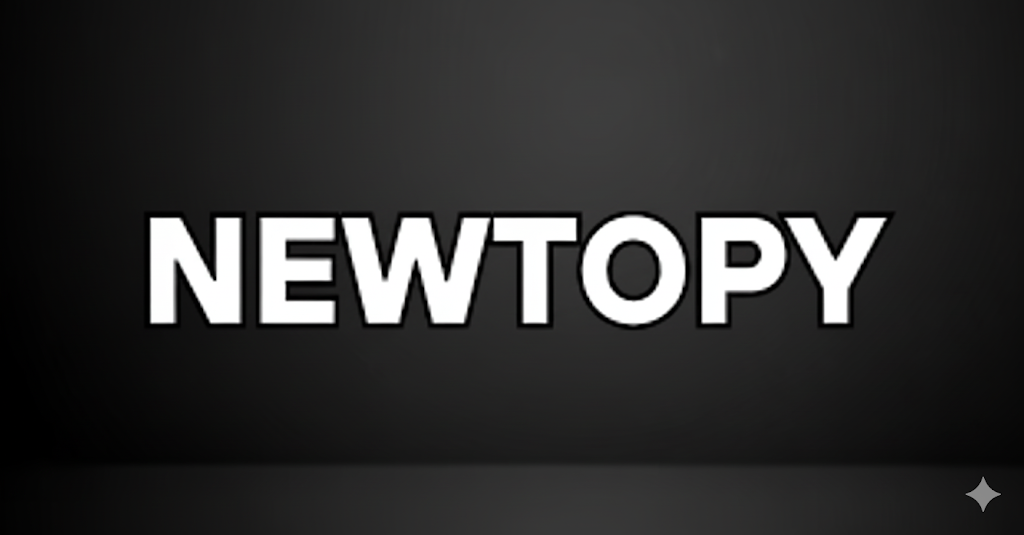Newtopy is a newer platform that creates streamlined, ad-free online communities. Here is what it does, how it works, and where it fits with other platforms.
Introduction
Newtopy is not another Facebook clone. It’s an effort to rectify the noise and clutter that most platforms are mired in. Instead, it eschews all those giant feeds clogged with ads and irrelevant posts in favor of small, private, topic-based communities that the company calls “Topies.” That’s the main idea. It then tosses in some analytics, automation, and a few AI clues.
What Newtopy Is Trying to Be
At its most basic, Newtopy is a place to form groups based on interests or projects. You can make them open to the public or private, for members only. It allows you to establish rules, control branding, and manage privacy. Unlike Reddit or Facebook, it touts zero ads and more robust data protection.
In a “Topy,” users exchange posts, chats, and files. There’s also a ranking or reputation system that demonstrates who contributes the most. Some posts mention dashboards and analytics tools that enable you to visualize growth, engagement, and activity.
It’s a combination of social platform, CRM, and project tool. That is why it doesn’t make sense to some that it mashes up categories.
Core Features in Plain Words
Here is what’s reliably cited about how Newtopy operates.
Focused Communities
Every Topy behaves like its own tiny village. You build one around a hobby, a business niche, a brand, or even a local community. It’s structured, not chaotic. Instead of the endless algorithm-driven noise, here you have clear topics.
Built-in Privacy and Control
Privacy is not an afterthought here. The creators emphasize that you can choose who is able to get in, what data is saved, and how your community looks. There are no third-party ads, an increasingly rare experience on the internet.
Smart Tools and Automation
Some describe automatically generated recommendations, such as best posting times, audience monitoring, or personalized right-fit follow-ups. This sounds a lot like what marketing CRMs do, but for small communities, right?
That’s the promise — privacy, focus, and some genuinely useful automation.
Why People Are Paying Attention
There’s a lot to like about Newtopy, though, because it’s addressing problems the incumbent giants largely ignore.
- No ads. You’re not inundated with irrelevant promotions.
- Smaller, cleaner communities. Those spaces are for real discussion, not vanity metrics.
- Better user control. You decide who’s in, what gets shared, and how it is organized.
- Data belongs to users. Articles say it puts ownership back in the hands of the creator or host.
That mix is giving it a small but expanding buzz in marketing, creative, and business circles.
But Here’s the Catch
The sources offer differing visions of what Newtopy actually is. Two blogs describe it as a smart networking and community platform, and one comment on a tech forum calls it an AI content generator for stories and images. Those don’t match. So there is confusion — perhaps several names by different people, or misunderstandings of the same name.
And even if we assume the community version is the actual one, there are problems. It’s not mainstream yet. Early users complained that it was hard to see who was on the platform and that the user base wasn’t big enough yet, as well as missing features like integrations with popular tools.
As with any new platform, it requires a certain mass of people for communities to feel alive. Without that, it may devolve into yet another slumbering network.
Pros and Cons
Let’s lay them out clearly.
Pros:
- Ad-free and privacy-first environment.
- User-owned communities.
- Clean, organized spaces for topics.
- Embedded analytics and potential for automation.
Cons:
- It is not yet fully developed or widely known.
- Uncertainty about what its actual role should be.
- Challenging to recruit members in the beginning.
- Competes with giant platform incumbents.
Comparison with Competitors
| Platform | What It Offers | Where Newtopy Differs |
| Facebook Groups | Big reach, instant audience | Filled with ads, privacy concerns |
| Large open discussion network | No branding control, messy structure | |
| Discord | Real-time chat, strong moderation | Less organized for posts and archives |
| Mighty Networks | Community and learning tools | Paid tiers, limited flexibility |
| Circle | Clean professional interface | Subscription-based, not ad-free for all |
| Newtopy | Ad-free, controlled, topic-based | Still early, smaller audience |
For Newtopy, that means it is attempting to mash-up what others do in separate places — privacy of Discord with the focus of Circle with the control of Mighty Networks — but the company will have to make a long-term play and stick around long enough for those bets to pay off.
Where It Might Fit Best
If you’re running a niche group, small brand or learning community, the structure of Newtopy may make sense. It’s particularly handy if you don’t want to mess with ads or algorithms. For a business coach, an indie creator, or even a producer of local events, it’s a quiet place to meet other people and not be constantly distracted.
But if you’re trying to reach a mass audience, that’s not the right tool just yet. Bigger platforms already dominate visibility. Newtopy is for people who care more about the depth of scaling than the scale.
Common Mistakes to Avoid
A topic with no topic and no value. Empty spaces die fast.
- Ignoring consistency. Societies need to maintain up-to-date communication with one another.
- Expecting instant growth. Moving users off established networks is not easy.
- Over-engineering with automation before having an audience.
- Forgetting moderation. Even small bands need clear boundaries.
If you can bypass those issues, Newtopy might be a good closed environment of focused communication.
The Confusion Around AI
In the TryBrass comments section, Newtopy is used as an example of a creation tool that creates AI-based tales or characters, and images based on users’ prompts. No other articles here support this theory. Perhaps it got crossed with some other tool, or perhaps early experimentation was to blame. Either way, it is not clear yet that AI-generated content will be a feature of the core.
So for the time being, better to think of Newtopy as a privacy-first social network instead of something more akin to a creative AI app.
What Could Make It Succeed
But if the developers keep their eyes on privacy and an ad-free experience, Newtopy could be one of the second-tier networks. The next step would be constructing stable integrations — linking to the tools of video, CRM, or newsletters. That’s when the tiny creators could fit everything that was once spread out across everything under one neat platform.
And if they open some limited monetization — premium communities, branded Topies — it can become profitable without sacrificing its no-ad promise.
FAQs
Q: Is Newtopy free?
Yep, it does seem to be ad-supported free use, and then you pay for more advanced tools.
Q: Can anyone join?
Yes, but many Topies are private or invite-only, based on how the creator sets them up.
Q: Is it still in beta?
It appears as if it’s still being built or is in testing. There hasn’t been an official wide release.
Q: Does it use AI?
References have come up to “smart” or “AI-based” recommendations, but not the full creative AI function.
Q: Can I build a brand on it?
That appears to be one of its primary ambitions — brand communities that are clean and free from distraction.
Conclusion
Newtopy sits at that in-between space — not totally another what-the-yeahayy is it social app, but also nowhere near clear what it’s aiming to be. It seeks to ameliorate what’s broken about the existing networks by cutting ads, noise, and random engagement. The concept of topic-based, private spaces is solid. The issue is execution and knowledge.
If it can make good on its promises — control, privacy, useful automation, and the depth of community — maybe it will grow into something that actually does matter. But with more users — or clearer features — it remains an interesting idea in search of a footing.

